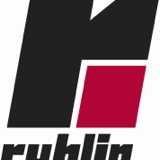Title Page
-
Document No.
-
Audit Title
-
Client / Site
-
Conducted on
-
Prepared by
-
Location
-
Personnel
Job Information
-
OSHA 300 forms complete and posted from February 1- April 30?
-
Team huddles up to date and complete?
-
Daily stretches being completed by all crews?
-
Safety time outs being performed?
-
OSHA and DOL posters posted?
General
-
Excavations, adjacent areas, and protective systems inspected by a competent person daily before the start of work?
-
Competent person has authority to remove employees from the excavation immediately?
-
Spoils, materials, and equipment set back at least two feet from excavation?
-
Barriers provided at all remotely located excavations, wells, pits, shafts etc. ?
-
Employees required to stand at a safe distance from vehicles being loaded or unloaded?
-
Spotting and barricade system established and utilized when mobile equipment is operating near edge of excavation?
Fire Prevention
-
Adequate fire extinguishers, checked and accessible?
-
"No Smoking" signs posted and enforced near flammables?
Utilities
-
Utility companies contacted and/or utilities located?
-
Exact location of utilities marked?
-
Underground installations protected, supported, or removed when excavation is open?
Means of Access and Egress
-
Ladders located every 25 feet in trenches deeper than 4 feet?
-
Ladders extended 3 feet above landings and secured?
-
Structural ramps used by employees designed by a competent person?
-
Ramps constructed of materials of uniform thickness cleated together on the bottom, equipped with no slip surface?
-
Employees protected from cave ins when entering or exiting excavation?
Heavy Machinery
-
Fire extinguishers, checked and accessible on equipment?
-
Back up alarms functioning properly?
-
Operators of equipment wearing seat belts?
-
Access steps into cab of machine are in good condition?
-
Spotters used as needed?
-
Back up cameras are installed and functioning properly?
Wet Conditions
-
Precautions taken to protect employees from water accumulation?
-
Water removal equipment monitored by competent person?
-
Surface water or runoff diverted or controlled to prevent accumulation in the excavation?
-
Inspections made after every rainstorm or other hazard increasing occurrence?
Hazardous Atmosphere
-
Atmosphere within the excavation tested where there is a reasonable possibility of oxygen deficiency, combustable gas, or other harmful contaminant exposing employees to a hazard?
-
Adequate precautions taken to protect employees from exposure to an atmosphere containing less than 19.5 percent oxygen and/or to other hazardous atmospheres?
-
Ventilation is provided to prevent employee exposure to an atmosphere containing flammable gas in excess of 10% of the lower explosive limit of the gas?
-
Testing conducted often to ensure that atmosphere remains safe?
-
Emergency equipment such as breathing apparatus, safety harnesses and lifeline and or basket stretcher readily available where hazardous atmospheres could or do exist?
-
Employees trained to use PPE and other rescue equipment?
-
Safety harnesses and lifeline used and individually attended when entering bell bottom or other deep confined excavations?
Traffic
-
Traffic zones set up and maintained properly?
-
Pedestrian traffic is discouraged by signage and barricades?
Support systems
-
Materials and or equipment for support systems selected based on soil analysis, trench depth, and expected loads?
-
Materials and equipment used for protective systems inspected and in good condition?
-
Materials and equipment not in good condition taken out of service?
-
Protective systems installed without exposing employees to the hazards of cave ins, collapses, or threat of being struck by materials or equipment?
-
Members of support system securely fastened to prevent failure?
-
Support systems provided to ensure stability of adjacent structures, buildings, roadways, sidewalks, walls, etc. ?
-
Removal of support systems progresses from the bottom and members are released slowly as to note any indication of possible failure?
-
Backfilling progresses with removal of support system?
-
Excavation of material to a level no greater than two feet below the bottom of the support system and only if the system is designed to support the loads calculated for the full depth?
-
Shield system in place to prevent lateral movement?
-
Employees prohibited from remaining In shield system during vertical movement?
PPE
-
Hard hats being worn by all employees?
-
Safety glasses being worn?
-
Employees wearing proper hand protection as needed?
-
Task specific PPE being worn as required?
-
High visibility vests worn by employees?







